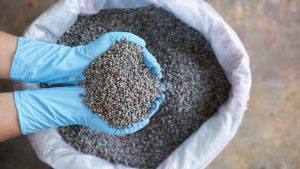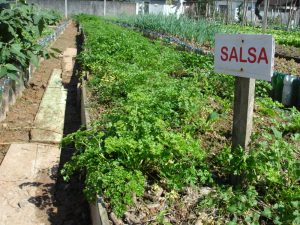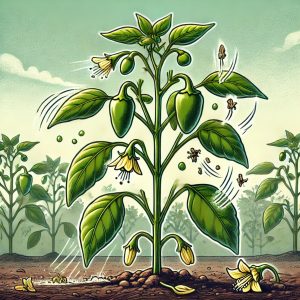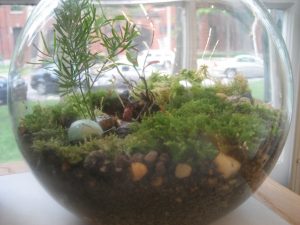
Mulch materials are essential for any garden. They enhance soil health, control weeds, and conserve moisture. This article will explore various mulch materials, helping gardeners choose the best option. We’ll delve into the benefits and drawbacks of each material, providing insights for a thriving garden.
Types of Mulch Materials
Contents
- 1 Types of Mulch Materials
- 2 Understanding Mulch
- 3 Choosing the Right Mulch for Your Garden
- 4 Application Techniques
- 5 Common Mistakes to Avoid
- 6 FAQ on Discovering the Best Mulch Materials
- 6.1 Can mulch materials attract termites and other pests?
- 6.2 How does the color of mulch impact my garden?
- 6.3 Is it possible to mulch too early in the spring?
- 6.4 Can mulch be used in container gardening?
- 6.5 How does mulch impact soil pH?
- 6.6 Is rubber mulch safe for all types of plants?
- 6.7 Can I use fresh wood chips as mulch around my plants?
- 6.8 How do I mulch around trees without harming them?
- 7 Conclusion
Mulch is more than just a gardening accessory; it’s vital for plant health and soil vitality. The right mulch material can transform your garden, offering benefits like moisture retention, temperature regulation, and weed control. However, not all mulch materials are created equal.
This section will explore the different types of mulch materials, focusing first on organic options. Each type of mulch material has unique properties and uses, making it crucial to understand your choices.
Organic Mulches
Organic mulches are derived from natural materials that decompose over time, enriching the soil with nutrients. They’re an eco-friendly choice, supporting your garden’s natural cycle of growth and decay.
Bark
Bark mulch, often sourced from pine, cedar, or cypress trees, is popular for its durability and aesthetic appeal. It decomposes slowly, providing long-term soil protection. Ideal for trees and perennial beds, bark mulch also deters certain pests due to its natural oils. However, it can be relatively expensive and may float away in heavy rain.
Straw
Straw is an affordable and effective mulch choice, especially for vegetable gardens. It’s lightweight, easy to spread, and provides excellent insulation for soil. Straw mulch is particularly beneficial for newly seeded areas, protecting seedlings from harsh elements.
Leaves
Shredded leaves are an often-overlooked mulching option. They’re readily available, especially in the fall, and can be collected for free. Leaves decompose quickly, adding valuable organic matter to the soil. They’re great for flower beds and around shrubs. However, whole leaves can mat down and prevent water and air from reaching the soil, so shredding is recommended.
Grass Clippings
Freshly cut grass can be an effective mulch, especially for vegetable gardens. Rich in nitrogen, grass clippings can help promote healthy plant growth. It’s important to apply them in thin layers to prevent matting and to use clippings from lawns that haven’t been treated with pesticides.
Compost
Compost is not just a soil amendment; it’s an excellent mulch material. It insulates the soil, retains moisture, and enriches it with nutrients as it decomposes. Compost is particularly beneficial for enriching poor soils and promoting robust plant growth. However, it may contain weed seeds if not properly processed.
Wood Chips
Wood chips are a versatile mulch material suitable for various garden types. They’re particularly good for pathways and large areas. While they decompose slowly and provide long-term coverage, they can also rob the soil of nitrogen during decomposition. It’s recommended to supplement with a nitrogen fertilizer when using wood chips.
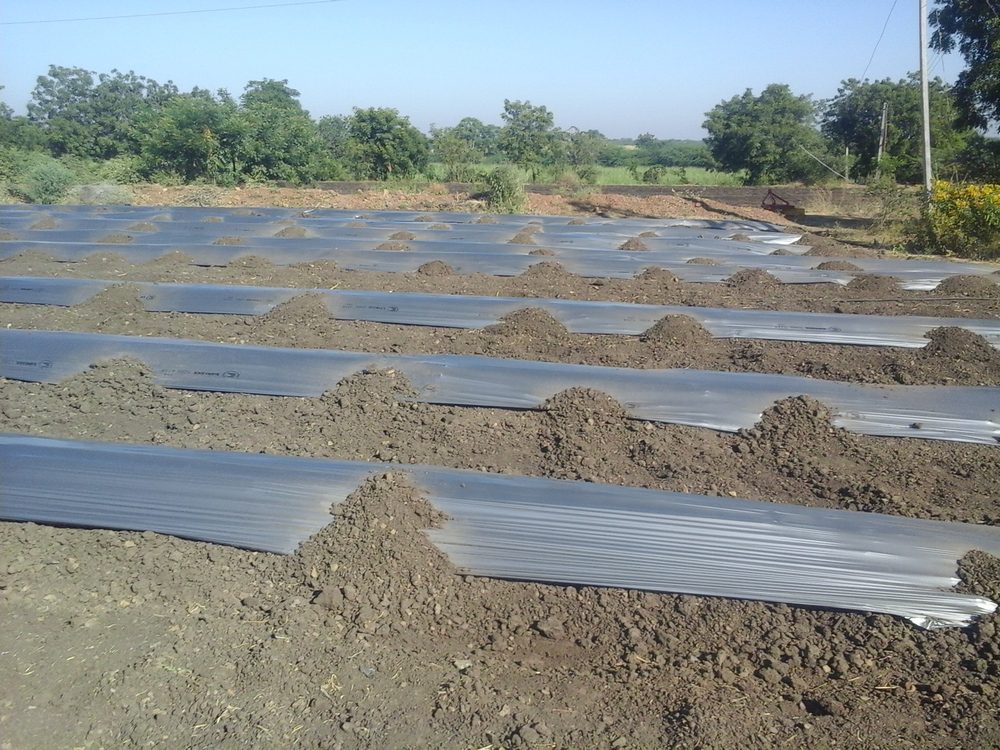
Inorganic Mulches
Inorganic mulch materials are non-living materials used to cover the soil. Unlike organic options, they don’t decompose and don’t need to be replenished regularly. They’re ideal for long-term use and specific landscaping needs. Here, we delve into the most common types of inorganic mulch materials and their applications.
Stones and Pebbles
Stones and pebbles are a popular choice for their decorative appeal and durability. They’re excellent for creating a clean, modern look in garden beds and around pathways. These mulch materials are particularly effective in areas prone to drought, as they reflect heat, helping to conserve soil moisture. However, they can be heavy to transport and challenging to remove if you change your garden layout.
Rubber Mulch
Made from recycled tires, rubber mulch is a sustainable choice for environmentally conscious gardeners. It’s long-lasting and provides excellent insulation for soil. Rubber mulch is often used in playgrounds due to its shock-absorbent properties. However, it doesn’t offer any nutritional benefits to the soil and can be more expensive than other options.
Plastic Sheeting
Plastic sheeting, often used in commercial agriculture, is effective for weed control and moisture retention. It’s commonly used in vegetable gardens, particularly for heat-loving plants like tomatoes and peppers. The plastic warms the soil and keeps it moist, promoting faster growth. However, plastic is not porous, so water and air cannot penetrate it, and it’s not an eco-friendly option.
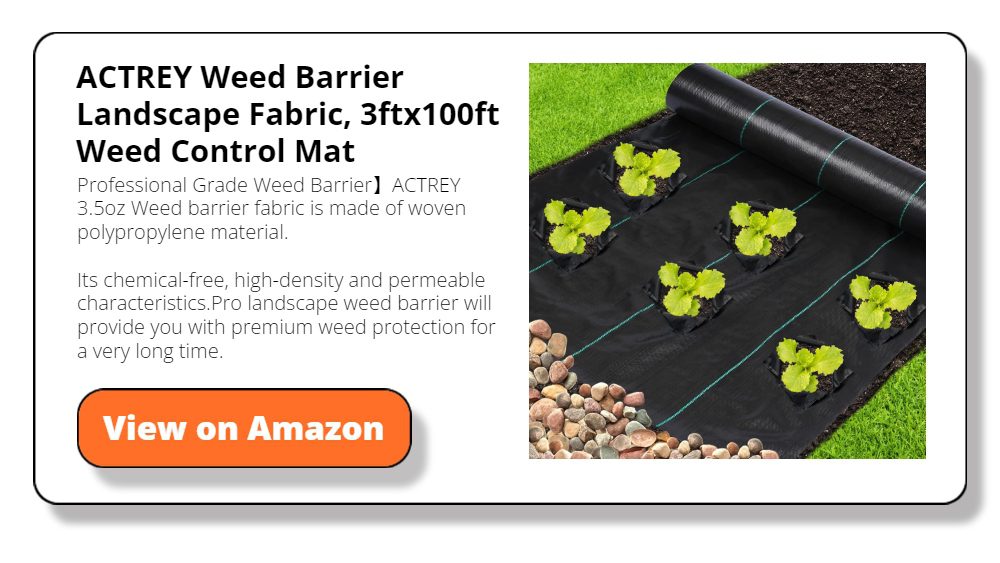
Landscape Fabric
Landscape fabric is a breathable inorganic mulch that allows air and water to reach the soil while still suppressing weeds. It’s often used under other mulches like bark or stones to enhance weed control. While effective, over time, soil and organic matter can accumulate on top of the fabric, allowing weeds to grow.
Gravel
Gravel is another inorganic mulch that’s excellent for pathways, driveways, and areas where you want minimal maintenance. It provides good drainage and stays in place well. However, gravel can sink into the soil over time and may need occasional replenishing or regrading.
Reflective Mulches
Reflective mulches, usually made of aluminum or silver polyethylene film, are unique in that they reflect sunlight. They’re used to repel certain pests and can enhance the growth of certain crops by increasing light exposure. Reflective mulches are particularly beneficial for plants like peppers and tomatoes in vegetable gardens.
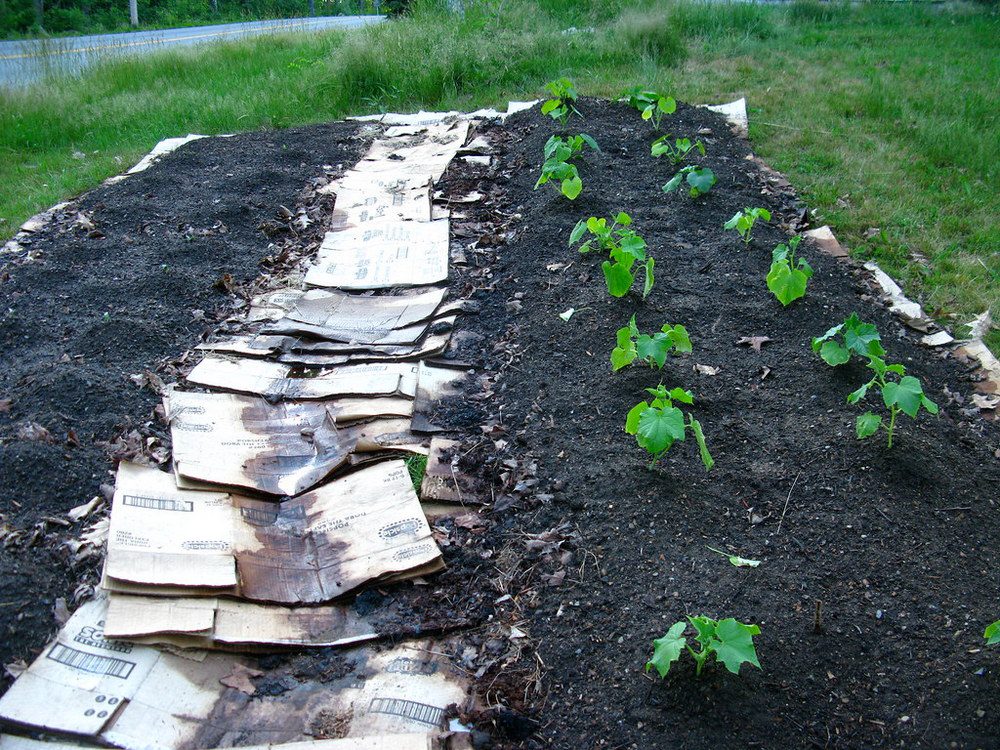
Understanding Mulch
Mulch is a key element in any garden, but its role and benefits extend beyond just aesthetics. Understanding what mulch is and its importance can help gardeners make more informed choices. This section breaks down the basics of mulch materials and highlights their significance in gardening.
What is Mulch?
Mulch refers to any material spread over the surface of the soil. Its primary purpose is to protect and improve the soil. Mulch materials can be organic, like bark or straw, or inorganic, like stones or plastic sheeting. Each type serves different purposes and offers various benefits to the garden.
Benefits of Mulching
Weed Control: Mulch inhibits weed germination and growth, reducing the need for frequent weeding.
- Soil Moisture Conservation: By covering the soil, mulch materials reduce evaporation, keeping the soil moist for longer periods.
- Temperature Regulation: Mulch acts as an insulator, keeping the soil warmer in winter and cooler in summer.
- Soil Health Improvement: Organic mulches decompose over time, adding nutrients and improving soil structure.
- Erosion Prevention: Mulch materials help to prevent soil erosion by buffering the impact of raindrops and reducing water runoff.
- Pest Control: Certain types of mulch, like cedar bark, can deter pests due to their natural oils.
Considerations in Mulching
While mulching has many benefits, it’s important to apply it correctly. Too much mulch material can suffocate plant roots, while too little may not effectively suppress weeds or conserve moisture. The timing of mulch application and the choice of material based on plant type and climate are crucial for the best results.
The Role of Mulch in Sustainable Gardening
Mulch plays a significant role in sustainable gardening practices. Organic mulch material enhances soil biodiversity and reduces the need for chemical fertilizers. Even inorganic mulch materials contribute to sustainability by reducing water usage and maintenance requirements.
Choosing the Right Mulch for Your Garden
Selecting the appropriate mulch is a crucial decision for any gardener. The right mulch can significantly enhance plant health and soil quality. This section guides you through choosing the best mulch for your garden.
Factors to Consider
When selecting mulch materials, several key factors should be considered to ensure your choice aligns with your gardening needs and goals.
Soil Type
- Texture and Drainage: Consider your soil’s texture and drainage capabilities. Sandy soils, which drain quickly, may benefit from moisture-retaining organic mulches like compost or bark. Clay soils, which retain moisture, might work better with lighter mulches that don’t hold excessive moisture.
- pH Level: Some mulches can affect soil pH. Pine needles, for instance, can make soil more acidic, benefiting acid-loving plants like azaleas and blueberries.
Plant Types
- Specific Needs: Different plants have varying mulch needs. Vegetable gardens thrive with organic mulches like straw, which decompose and enrich the soil. Perennials might need a protective layer of bark mulch to insulate their roots.
- Growth Stages: Young plants might need finer mulches that are easier to push through, whereas established plants can handle heavier mulches.
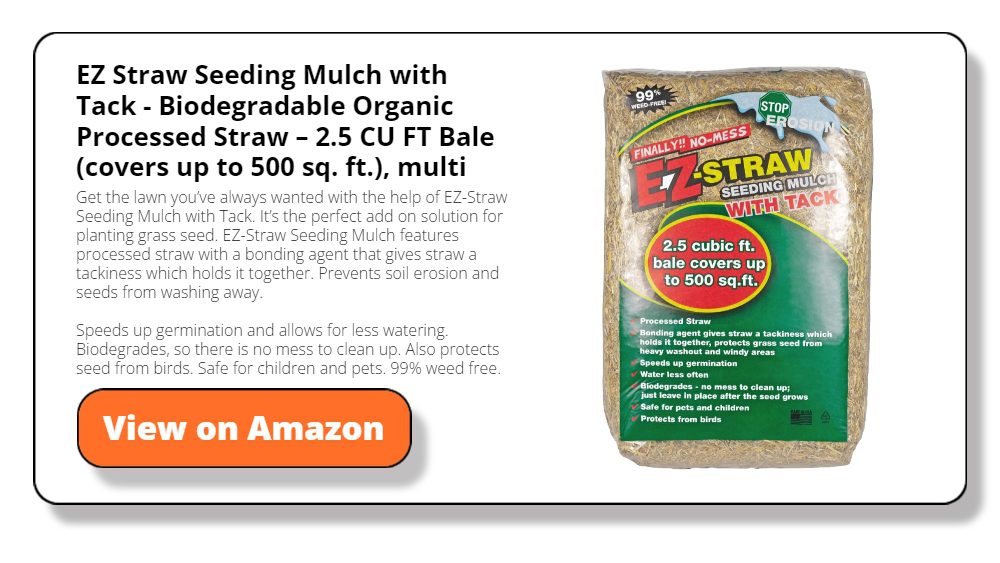
Climate Conditions
- Temperature Fluctuations: In extreme temperature variations, insulating mulches like wood chips can protect plant roots from freezing or overheating.
- Precipitation Levels: In wet climates, avoid mulches that retain too much moisture, which could lead to root rot. In arid regions, choose mulches that effectively conserve water.
Aesthetic Preferences
- Visual Appeal: Consider the look you want to achieve in your garden. Decorative stones might suit a formal garden, while organic mulches offer a more natural look.
- Consistency: For a cohesive appearance, choose a mulch material that complements the colors and textures of your garden.
Environmental Concerns
- Sustainability: Opt for mulch material sourced from sustainable materials, like locally produced organic mulches or recycled rubber.
- Impact on Local Ecosystem: Be mindful of how your mulch choice affects the local ecosystem. Avoid invasive or non-native materials that could disrupt local biodiversity.
Maintenance and Longevity
- Durability: Consider how long different mulch types last. Organic mulches need replacing as they decompose, while inorganic options like pebbles are more permanent.
- Ease of Maintenance: Some mulches, like plastic sheeting, require less upkeep, whereas organic options might need more frequent replenishment.
Cost and Availability
- Budget: Your budget can significantly influence your choice. While organic mulches may be more affordable initially, inorganic mulches might offer better long-term value.
- Local Availability: Consider the availability of mulch materials in your area. Locally sourced materials are often more cost-effective and environmentally friendly.
Understanding these factors helps you choose a mulch that looks good and contributes to your garden’s health and sustainability. The right mulch can significantly impact your gardening success, creating a thriving, beautiful, eco-friendly landscape.
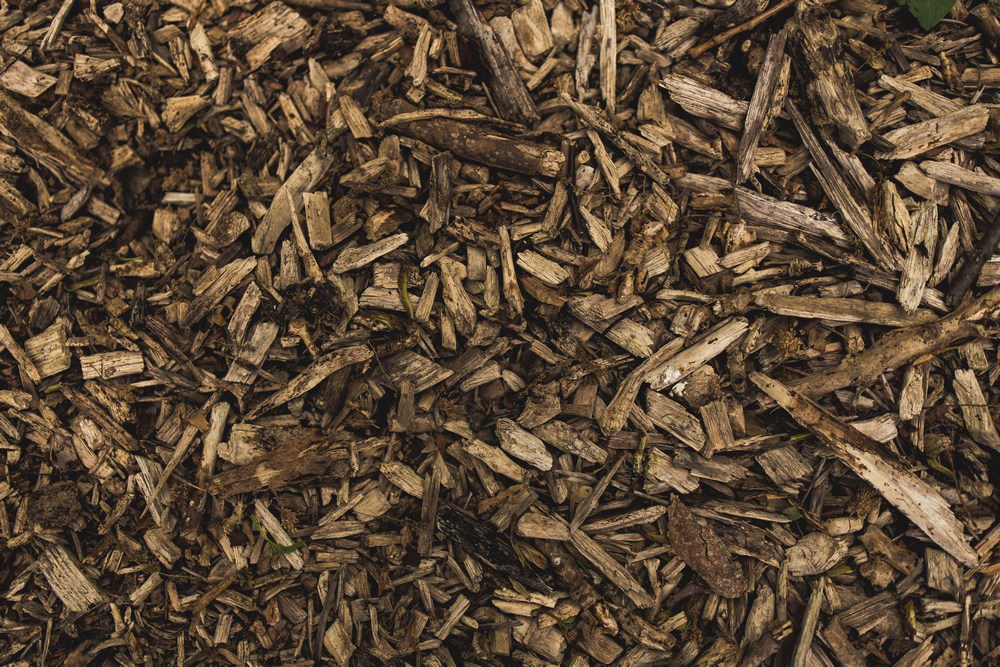
Tailoring Mulch Choice to Gardening Goals
Choosing the right mulch is more than a practical decision; it’s about aligning your gardening practices with your specific goals and aspirations. Whether you aim to create a lush, productive vegetable garden or a serene, aesthetically pleasing landscape, the type of mulch you select plays a pivotal role.
Let’s explore how to tailor your mulch choice to meet various gardening objectives.
Enhancing Soil Fertility
Organic mulches like compost or well-rotted manure are ideal for gardeners focused on improving soil health and boosting fertility. These materials break down over time, enriching the soil with nutrients and enhancing its structure. They are particularly beneficial in vegetable gardens or flower beds where soil quality directly impacts plant health.
Water Conservation
In regions with limited water resources or for gardeners practicing water-wise gardening, choosing a mulch that effectively retains soil moisture is crucial. Organic mulches like straw or wood chips are excellent for conserving water. They reduce evaporation and help maintain consistent soil moisture levels, which is essential for drought-tolerant landscaping.
Pest and Disease Control
Certain mulches can help manage pests and diseases in the garden. Cedar bark, for instance, is known for its natural insect-repelling properties. Similarly, plastic sheeting or landscape fabric can prevent soil-borne diseases from reaching plant foliage, a common concern in vegetable gardens.
Creating a Decorative Landscape
For those prioritizing the aesthetic aspect of their garden, the visual appeal of mulch is a key consideration. Decorative stones, colored mulch, or neatly shredded bark can add a polished look to garden beds and landscapes. These choices are particularly suitable for formal gardens or areas where the visual impact is as important as the practical benefits.
Encouraging Wildlife
If attracting wildlife is one of your gardening goals, choosing a mulch that supports this objective is important. Organic mulches can provide habitat and food sources for beneficial insects, birds, and other wildlife. Natural mulches like leaf litter or bark create a hospitable environment for these creatures, contributing to a balanced and healthy garden ecosystem.
Low Maintenance Gardening
Choosing a mulch that requires minimal upkeep is key for busy gardeners or those seeking a low-maintenance approach. Inorganic mulches like gravel or rubber mulch don’t decompose and, therefore, don’t need regular replacement. These options are ideal for areas where long-term, fuss-free maintenance is desired.
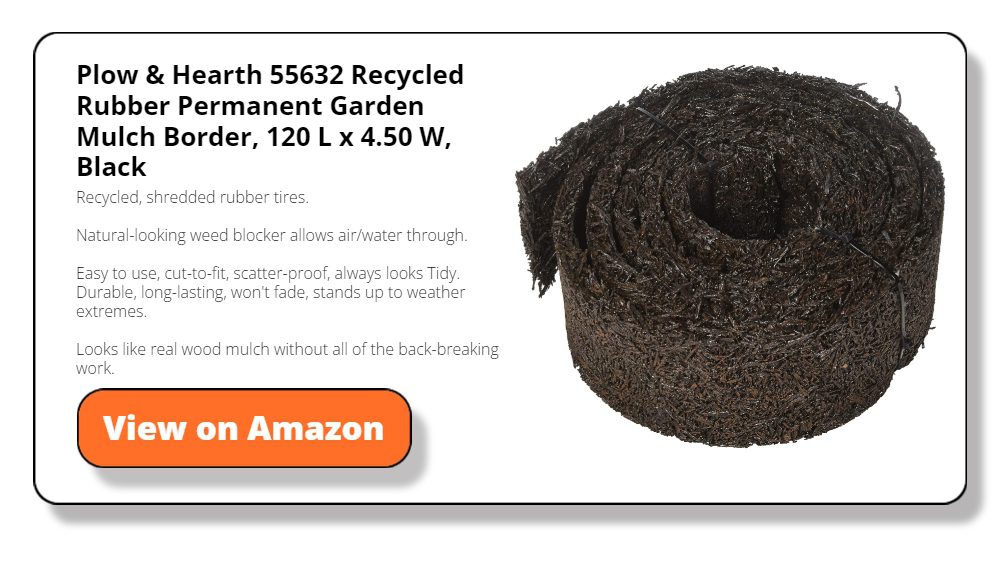
Application Techniques
Applying mulch correctly is as important as choosing the right type. Proper application ensures that the mulch performs its intended functions, such as conserving moisture, regulating soil temperature, and suppressing weeds.
This section will cover the best practices for applying mulch and common mistakes to avoid, providing a comprehensive guide to effective mulch application.
Timing of Application
Applying mulch in early spring is beneficial. It helps suppress weeds and retain soil moisture as temperatures increase. This timing is especially crucial in vegetable gardens and flower beds.
Once plants are established, mulching is essential. It maintains soil conditions, aiding plant growth. This is particularly important for newly planted trees or perennials.
Preparing the Area
Before mulching, remove all existing weeds. This step ensures that the mulch can effectively suppress future weed growth.
Check the soil’s moisture level. It should be moist but not saturated. Mulching over dry soil can lead to moisture problems for plants.
Choosing the Right Thickness
A layer of 2-4 inches is ideal. This depth balances moisture retention and air circulation, which is essential for healthy plant roots.
Too much mulch can harm plants. It can lead to root rot and attract pests. Always keep mulch a few inches away from plant bases and tree trunks.
Mulching Sloped Areas
On slopes, heavier mulches like wood chips are effective. They stay in place better than lighter materials, preventing soil erosion.
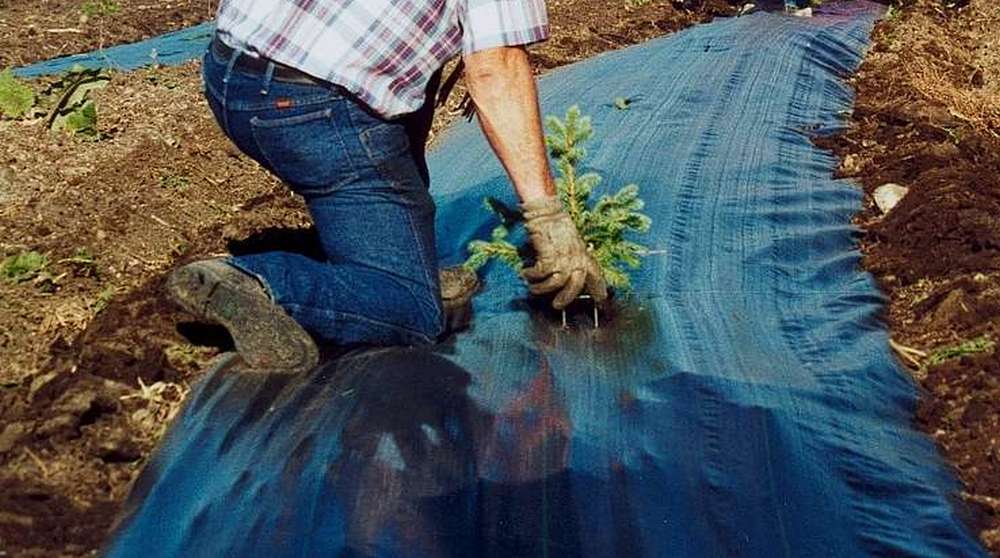
Common Mistakes to Avoid
While mulching is a straightforward gardening practice, certain common errors can undermine its benefits. Awareness of these pitfalls can help gardeners avoid unintentional harm to their plants and ensure their mulching efforts are successful.
Over-Mulching
Over-mulching is a frequent issue that can lead to several problems:
- “Mulch Volcanoes”: This occurs when mulch is piled high against tree trunks or plant stems, resembling a volcano. While it may look neat, this practice can cause excessive moisture retention around the base, leading to rot and disease. It also creates a haven for pests like rodents, which can damage the bark.
- Excessive Depth: Applying mulch too thickly is another aspect of over-mulching. The ideal depth for most mulches is about 2-4 inches. Anything beyond that can suffocate plant roots, preventing them from accessing air and moisture. This situation can also lead to root rot and fungal growth.
Always spread your mulch evenly and maintain the recommended depth to avoid over-mulching. Keep a few inches of space around the bases of plants and tree trunks to ensure proper air circulation.
Using Inappropriate Materials
Every garden and plant type has specific needs, and using the wrong mulch can be detrimental. For example, highly acidic mulch may harm plants that prefer alkaline conditions. Similarly, fine mulches in dense layers can impede water penetration, leading to dry soil conditions.
Be cautious of where your mulch comes from. Grass clippings from lawns treated with herbicides or pesticides can introduce these chemicals into your garden, harming beneficial soil organisms and plants. Similarly, using mulch from diseased or pest-infested plants can spread problems throughout your garden.
Ignoring Soil and Plant Conditions
Different soils have varying drainage and nutrient profiles, which can be significantly affected by the type of mulch used. For example, using a heavy, moisture-retentive mulch on dense clay soil can lead to waterlogging and root diseases.
Each plant species has unique moisture, nutrition, and air circulation requirements. Using a mulch that doesn’t align with these needs can hinder plant growth and health. For instance, some plants may prefer a drier soil environment, while others might need a more moisture-retentive mulching approach.
Poor Maintenance Practices
Organic mulches naturally decompose over time, which is beneficial for the soil but also means they thin out. Neglecting to add fresh mulch can leave your soil exposed and your plants unprotected. To maintain the desired depth and benefits, it’s important to check and replenish organic mulches annually or more frequently.
Regular inspection under the mulch layer is vital. Mulch can sometimes harbor pests or encourage the growth of unwanted fungi. In damp conditions, mulch might retain too much moisture, leading to root rot or other diseases. Periodically pull back the mulch to check the condition of the soil and the health of your plants’ roots. If you notice any issues, address them promptly to prevent further damage.
As seasons change, so do the needs of your garden. For instance, in the winter, mulch acts as an insulator for plant roots. However, as spring approaches, pulling back or thinning out mulch is often necessary to allow the soil to warm up. Adapting your mulching approach to seasonal needs is key to supporting your plants’ growth cycles.
FAQ on Discovering the Best Mulch Materials
Can mulch materials attract termites and other pests?
Certain organic mulches, like wood chips, can attract termites if placed too close to your home’s foundation. To minimize this risk, use inorganic mulches like gravel near structures and maintain a barrier zone between your home’s organic mulch and wooden elements.
How does the color of mulch impact my garden?
The color of mulch can affect both its aesthetic appeal and functional properties. Darker mulches absorb and retain more heat, benefiting cooler climates but may stress plants in hot conditions. Lighter-colored mulches reflect more light and retain less heat, suitable for warmer climates.
Is it possible to mulch too early in the spring?
Mulching too early in the spring can delay soil warming and plant growth. It’s best to wait until the soil has adequately warmed up. This timing varies by region but is typically after the last frost date.
Can mulch be used in container gardening?
Mulch can be beneficial in container gardening, helping to retain moisture and regulate soil temperature. Use a lighter, less dense mulch like coconut coir or bark chips for containers.
How does mulch impact soil pH?
Some organic mulches can affect soil pH as they decompose. For example, pine needles can acidify soil over time, making them suitable for acid-loving plants. If soil pH is a concern, consider testing your soil and choosing a mulch that aligns with your plants’ pH preferences.
Is rubber mulch safe for all types of plants?
Rubber mulch is generally safe but doesn’t offer the soil-enhancing benefits of organic mulches. It’s best used in areas where soil improvement isn’t a priority, like playgrounds or pathways. However, it’s always good to research the specific needs of your plants before choosing rubber mulch.
Can I use fresh wood chips as mulch around my plants?
Fresh wood chips can be used but with caution. As they decompose, they can temporarily tie up nitrogen in the soil, potentially affecting plant growth. It’s often better to use aged or composted wood chips, especially around young or nitrogen-sensitive plants.
How do I mulch around trees without harming them?
When mulching around trees, avoid creating “mulch volcanoes.” Keep the mulch about 2-4 inches deep and start a few inches away from the trunk, extending to the drip line. This approach prevents moisture buildup against the trunk and encourages healthy root growth.
Conclusion
Selecting and using the right mulch materials is fundamental to successful gardening. Whether organic or inorganic, each type of mulch brings unique benefits and challenges. Understanding these differences allows gardeners to choose the best mulch materials for their specific needs, enhancing soil health, controlling weeds, and conserving moisture.
By applying mulch correctly and avoiding common mistakes, you can ensure that your garden not only thrives but also contributes to the sustainability and beauty of your outdoor space. Remember, the right mulch materials can be the key to unlocking your garden’s full potential.

